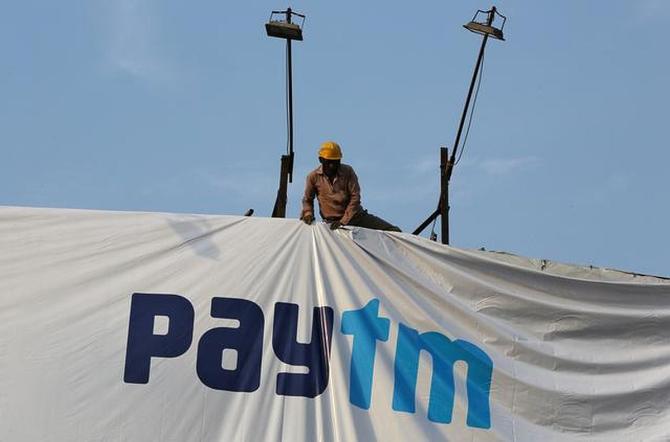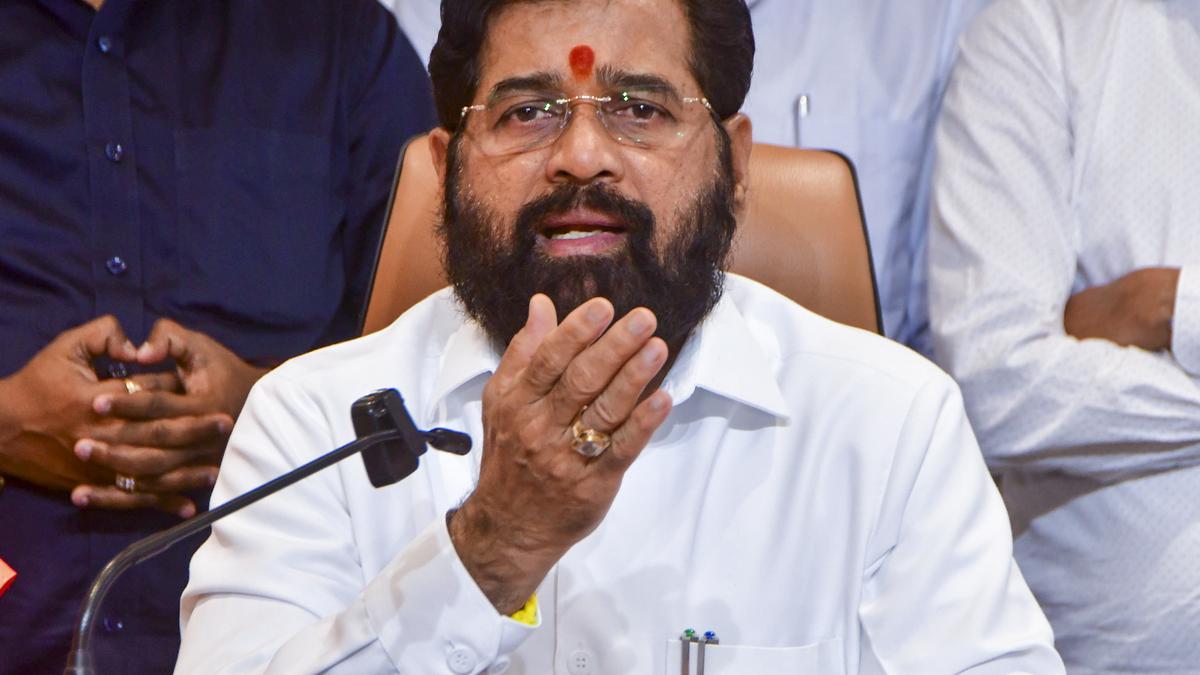‘This marks a turning point for Paytm, with the regulatory environment looking much clearer than it has been in the last two years.’

Photograph: Kind courtesy Google Play store
On August 5, Antfin, the Chinese investment arm of Alibaba, exited Paytm completely.
A week later, on August 12, Paytm Payments Services Ltd (PPSL), the payments arm of One97 Communications (OCL), secured an in-principle nod from the Reserve Bank of India to function as an online payment aggregator (PA).
This approval marked the end of a two-year wait, during which PPSL was barred from onboarding new merchants.
The delay has caused the firm to lose ground in the fast-growing online merchant space, where rivals such as Razorpay and Cashfree Payments, despite facing their own temporary embargoes, have managed to surge ahead.
“One can connect the dots. The company cleared Chinese investment from its cap table, and soon after got RBI’s nod to operate as a PA,” said a top industry executive, requesting anonymity.
Yet, the question remains: Is Paytm out of the regulatory knot?
Crisis to compliance
At its 24th annual general meeting in September last year, the company’s founder, Vijay Shekhar Sharma, called for a ‘compliance-first’ approach into its fintech business while focusing on regulation and the core business of the firm — payments and financial services.
“The important thing for us to remember is that if we do not make compliance and risk a core part of the business, then it does not become the bigger business that we envision,” Sharma said after restrictions were imposed on the Paytm Payments Bank, earlier in 2024.
“As far as the group and entity is concerned, we now look at [a] compliance-first, technology-second approach,” he added.
The remarks hold weight, as nearly 20 months on, the RBI has yet to lift the restrictions imposed on Paytm Payments Bank in 2024 over compliance lapses.
Even if restrictions are eased, the firm faces the daunting task of redoing the know your customer (KYC) checks for its large customer base.
Its base of prepaid payment instruments (PPIs) stood at 630.7 million in January 2024. That number has fallen to 100.73 million as of July 2025, according to RBI data.
RBI guidelines mandate that PPIs with no transactions for a year must be deactivated by the issuer and can be reactivated only after proper validation and due diligence. (PPIs are payment instruments such as digital wallets.)
“If the PA piece was stuck because of Chinese investment, the payments bank business is stuck over non-compliance,” said the fintech participant quoted above.
“Even if it resumes normal business operations, all of the customers will have to undergo a KYC process again, which is very cumbersome for an entity Paytm’s size,” the person added.
The restrictions on the payments bank have impacted Paytm.

Photograph: Amit Dave/Reuters
It was forced to migrate users to other payment service provider (PSP) banks, thereby falling behind in UPI.
The National Payments Corporation of India (NPCI), which operates retail payments and settlement systems, allowed it to add new customers only after nine months of restrictions.
Consequently, Paytm’s UPI share fell from 13 per cent in January 2024 to 7 per cent by August 2025, though it still holds third place in the ecosystem, behind PhonePe and Google Pay.
The person quoted above added that the bank will have to prove to the regulator that all previous issues, including alleged money laundering concerns, have been cleared before restrictions are eased.
Sahil Arora, partner at law firm Saraf and Partners, is of the view that this is a turning point for Paytm.
“The RBI’s in-principal approval for Paytm’s payment aggregator licence is a strong signal that many of the key regulatory concerns from 2022 have now been addressed,” he said.
“It lifts the freeze on merchant onboarding, which was a major overhang for the company, and shows that foreign direct investment (FDI) and shareholding issues are behind them.”
Arora added that even if restrictions continue, it shouldn’t directly impede the (payment) aggregator’s path.
“Overall, this marks a turning point for Paytm, with the regulatory environment looking much clearer than it has been in the last two years,” he said.
All is not hunky-dory, though.
In March, the Enforcement Directorate issued a show cause notice to Paytm’s parent firm, OCL, for alleged violations under the Foreign Exchange Management Act (Fema) linked to transactions worth over Rs 611 crore.
The notice was issued in connection with the acquisition of subsidiaries Little Internet Pvt Ltd and Nearbuy India Pvt Ltd.
Paytm has maintained that the alleged violations occurred before these firms became its subsidiaries.
In addition, Paytm Money, a wholly-owned OCL subsidiary, paid Rs 45.5 lakh to settle a case with the Securities and Exchange Board of India (Sebi) over lapses in complying with technical glitch frameworks.
And in April, Sharma surrendered 21 million shares, months after Sebi questioned the grant of share-based employee benefits.
Paytm did not respond to a detailed questionnaire by Business Standard on the status of the violations and the payments bank’s resolution.
Analysts say that while Paytm has weathered past regulatory storms, the road ahead hinges on resolving its payments bank issues.
“The attraction of owning a payments bank business has considerably faded; many players have given their licences back,” said Shriram Subramanian, founder and managing director, InGovern Research, a proxy advisory firm.
“Hence, the company may not want to pursue the payments bank business.”
That said, Paytm has sailed through rough weather in the past while resolving some of the other pressing concerns such as the payment aggregator approval and settlement of its case with Sebi.

IMAGE: Vijay Shekhar Sharma receives a memento from BSE MD and CEO Ashishkumar Chauhan after the listing ceremony. Photograph: Niharika Kulkarni/Reuters
Back in the green, but…
Fintech peers believe it would be difficult for the company to corner large online merchants, especially since competition has intensified with more than 50 fully licensed online PA players now in the game.
“It’s difficult to grow in this market. The company will have to double down to materially expand,” a founder of a payments firm said.
The regulatory hurdles for PPSL began in November 2022, when RBI directed it to stop onboarding new merchants until it had secured approval for downstream investment from OCL.
“Paytm has proactively worked to understand the regulators and become increasingly oriented towards compliance while ensuring that business continues to grow,” said Subramanian.
The first quarter results of 2025-2026 (Q1FY26) — when the firm reported a net profit of Rs 122.5 crore, against losses of Rs 838.9 crore in Q1FY25 — show the company is focused on getting its mojo back in its core business.
Paytm’s revenue from operations grew 27.7 per cent to Rs 1,917.5 crore in Q1FY26 from Rs 1,501.6 crore in Q1FY25. Sequentially, revenue from operations remained stagnant compared to Rs 1,911.5 crore in Q4FY25.
Meanwhile, the company, which has been cutting down on its expenses over the past few quarters, turned green in Q1FY26, posting a profit of Rs 122.5 crore.
The number of registered merchants with it grew 11 per cent, year-on-year, to 45 million in Q1FY26 from 41 million in Q1FY25.
Sequentially, this count grew 3 per cent from 44 million in Q4FY25.
The company reported an all-time high of 13 million merchant subscriptions, including payment acceptance devices, in Q1FY26.
This number has grown from 10.9 million in Q1FY25 and 12.4 million in Q4FY25.
Revenue from the distribution of financial services doubled to about Rs 561 crore in Q1FY26 from Rs 280 crore in Q1FY25.
This marginally grew by 3 per cent from Rs 545 crore in Q4FY25.
Things are beginning to look up. The question is: Is Paytm out of the woods?
Feature Presentation: Aslam Hunani/Rediff
































